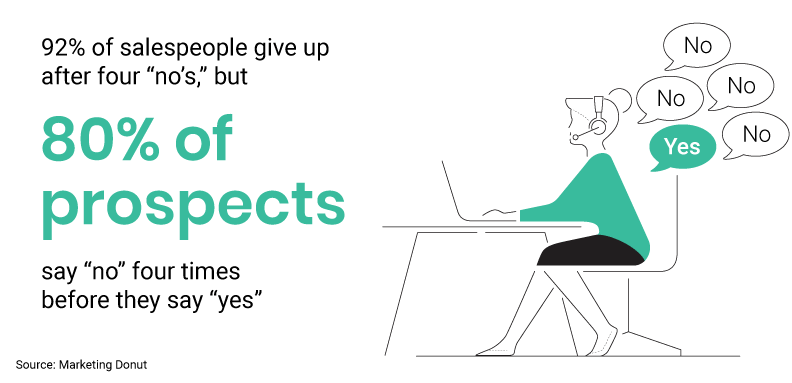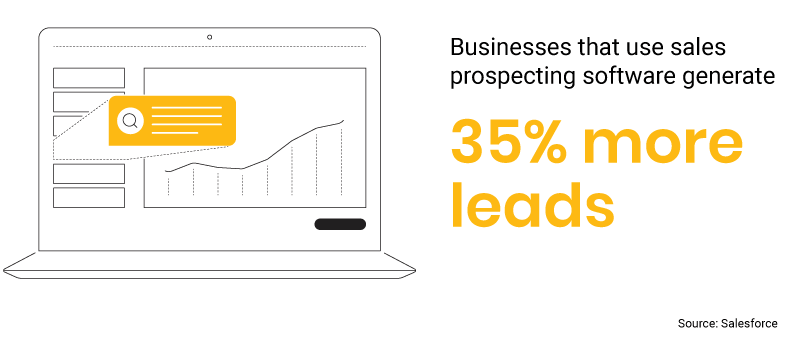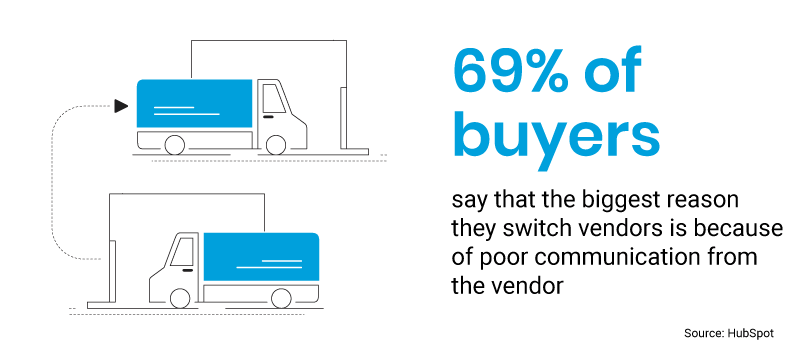Sales prospecting is a vital part of any successful business. That’s because it helps identify potential customers and generates new leads for your business. Without prospecting, businesses may miss out on valuable opportunities to connect with individuals who could benefit from their products or services.
By engaging in prospecting, businesses can expand their customer base, increase revenue, and build brand awareness. It allows them to establish relationships with potential clients and understand their needs and pain points, which can help tailor marketing efforts and sales strategies to better serve their target audience.
Ultimately, sales prospecting is an investment in the long-term success of a business and should be prioritized accordingly.
20 Interesting Sales Prospecting Statistics
Sales Prospecting Statistics: Overview
- Companies that excel at lead nurturing generate 50% more sales-ready leads at a 33% lower cost. (Forrester Research)
- 92% of salespeople give up after four “no’s,” but 80% of prospects say “no” four times before they say “yes.” (Marketing Donut)

- Companies with a structured sales process grow 15% faster than those without. (HubSpot)
- 85% of B2B marketers say lead generation is their most important content marketing goal. (Content Marketing Institute)
- 80% of sales require 5 follow-up calls after the meeting, yet 44% of salespeople give up after the first follow-up. (Marketing Donut)
- Sales prospecting is the most effective way to increase sales and revenue for 70% of B2B companies. (ZoomInfo)
Sales Prospecting Statistics: Best Practices
- Sales prospecting can increase conversion rates by up to 40%. (ZoomInfo)
- 68% of B2B organizations use automated lead nurturing to improve sales funnel efficiency. (Demand Gen Report)
- Organizations that automate lead management see a 10% or greater increase in revenue in 6-9 months. (Strategic IC)
- 60% of companies with a formalized sales process have higher revenue growth than those without one. (Harvard Business Review)
- Companies with a strong sales prospecting strategy are 2x more likely to meet or exceed revenue targets. (Salesforce)
- Businesses that use sales prospecting software generate 35% more leads. (Salesforce)

Sales Prospecting Statistics: Personalization and Selling
- Prospects are 70% more likely to accept a meeting when the outreach is based on a mutual connection. (Salesforce)
- Personalized video in sales outreach can increase response rates by 80%. (HubSpot)

- 78% of decision-makers have taken an appointment or attended an event that came from an email or cold call. (DiscoverOrg)
- The best time to call prospects is between 4 pm and 5 pm. (InsideSales.com)
- Companies that respond to leads within an hour are 7 times more likely to qualify them than those that respond after an hour. (LeadResponseManagement.org)
Sales Prospecting Statistics: Performance Comparison
- 79% of marketing leads never convert into sales. (Pardot)
- Sales prospecting is the most effective way to increase sales and revenue for 70% of B2B companies. (ZoomInfo)
- 69% of buyers say that the biggest reason they switch vendors is because of poor communication from the vendor. (HubSpot)

Final Thoughts
Sales prospecting is a critical component of the sales process, and it involves identifying and pursuing potential customers who are likely to be interested in a product or service. Furthermore, sales prospecting allows businesses to stay ahead of competitors by identifying potential customers before they do. This is especially important in today’s fast-paced business environment, where companies are constantly vying for customers’ attention and loyalty. By identifying potential customers early on, businesses can establish a competitive advantage and increase their chances of success.
Effective sales prospecting can help businesses improve their efficiency by focusing resources on the most promising leads. This can lead to higher productivity and greater success in closing sales. Ultimately, sales prospecting is an essential aspect of the sales process that can help businesses grow and succeed in today’s competitive marketplace.






